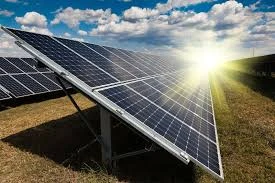bifacial vs monofacial solar panel cost
Bifacial vs. Monofacial Solar Panels A Cost Comparison
With the growing emphasis on renewable energy, solar power has gained traction as one of the most sustainable energy solutions available today. As the market for solar panels evolves, two types have surfaced as popular choices bifacial and monofacial solar panels. Each type has unique features and cost implications that can influence decision-making for consumers and businesses alike. In this article, we will explore the cost differences between bifacial and monofacial solar panels, their efficiencies, and why these factors can heavily influence your investment in solar energy.
Understanding Bifacial and Monofacial Solar Panels
Monofacial solar panels are the traditional design, featuring solar cells on only one side. They are typically less expensive and are widely available, making them a feasible option for many residential and commercial installations. On the other hand, bifacial solar panels contain solar cells on both the front and back sides. This design allows them to capture sunlight from both direct exposure and reflections from surfaces like the ground or nearby structures. As a result, bifacial panels can produce up to 30% more energy compared to their monofacial counterparts in optimal conditions.
Cost Comparison
When considering the initial investment, monofacial solar panels generally have a lower upfront cost. Prices can range from $0.70 to $1.00 per watt, making them an attractive choice for budget-conscious buyers. In contrast, bifacial solar panels can range from $1.00 to $1.50 per watt due to their advanced technology and increased efficiency. While this higher initial investment can be a deterrent, many investors argue that the long-term gains of bifacial panels offset the upfront costs.
Additionally, installation costs may also differ between the two types. Bifacial panels typically require specialized mounting systems to maximize their energy-harvesting capabilities and accommodate dual-sided exposure. This can lead to higher installation costs compared to monofacial panels, which can be installed using conventional methods. However, the additional energy production that bifacial panels can achieve may justify the initial expenses.
bifacial vs monofacial solar panel cost

Return on Investment (ROI)
The ROI on solar panels is critical in determining their financial viability. Although bifacial panels come with higher costs, they also offer higher energy production potential, leading to increased ROI over time. For instance, in installations where bifacial panels can take advantage of reflected light—like in snowy climates or areas with light-colored surfaces—the boost in efficiency can significantly improve energy generation and offset higher upfront costs.
Moreover, the lifespan of the solar panels is a crucial factor to consider. Both bifacial and monofacial panels can have a lifespan of about 25 years, but bifacial panels are often constructed with more durable materials, which may resist environmental damage better over time. This durability can lead to fewer maintenance costs and higher performance persistence, further enhancing their ROI.
Conclusion
The choice between bifacial and monofacial solar panels ultimately depends on individual or organizational energy needs, budget priorities, and installation conditions. While bifacial panels present a higher initial price tag, their potential for greater energy production can make them a worthwhile investment in the long run. For consumers with limited budgets or who prefer a straightforward installation process, monofacial panels may be the more accessible option.
Ultimately, the decision should be guided by a careful analysis of both short-term costs and long-term benefits. As renewable energy continues to evolve, the solar market will likely see ongoing innovations that could further shift the balance between these two types of solar technology. Whether you choose bifacial or monofacial panels, investing in solar energy represents a significant step towards a sustainable future, making it essential to weigh your options carefully.
-
Unlocking Energy Freedom with the Off Grid Solar InverterNewsJun.06,2025
-
Unlock More Solar Power with a High-Efficiency Bifacial Solar PanelNewsJun.06,2025
-
Power Your Future with High-Efficiency Monocrystalline Solar PanelsNewsJun.06,2025
-
Next-Gen Solar Power Starts with Micro Solar InvertersNewsJun.06,2025
-
Harnessing Peak Efficiency with the On Grid Solar InverterNewsJun.06,2025
-
Discover Unmatched Efficiency with the Latest String Solar InverterNewsJun.06,2025







